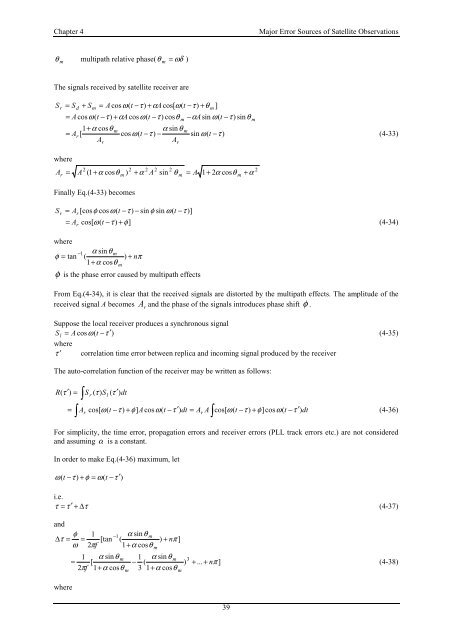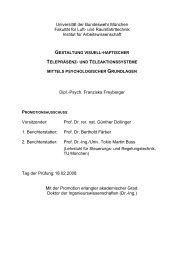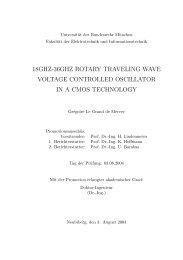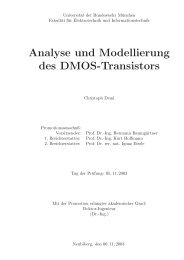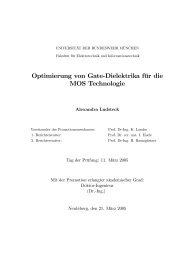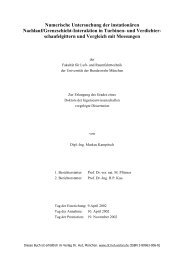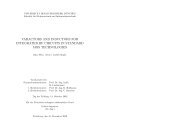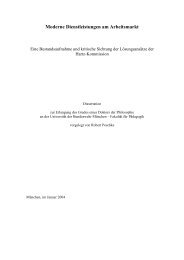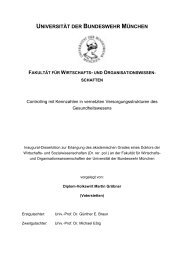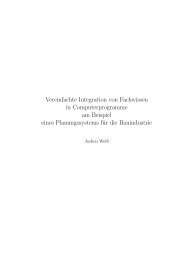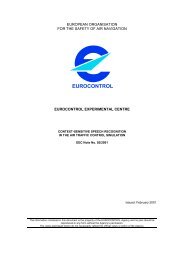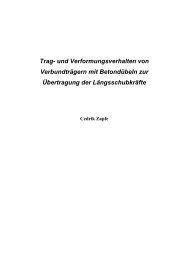Precise Orbit Determination of Global Navigation Satellite System of ...
Precise Orbit Determination of Global Navigation Satellite System of ...
Precise Orbit Determination of Global Navigation Satellite System of ...
Create successful ePaper yourself
Turn your PDF publications into a flip-book with our unique Google optimized e-Paper software.
Chapter 4 Major Error Sources <strong>of</strong> <strong>Satellite</strong> Observations<br />
θ m multipath relative phase( θ = ωδ )<br />
The signals received by satellite receiver are<br />
S r = S d + S m = A cosω ( t −τ<br />
) + αA<br />
cos[ ω(<br />
t −τ<br />
) + θ m ]<br />
= A cosω ( t −τ<br />
) + αA<br />
cosω<br />
( t −τ<br />
) cosθ<br />
−αA<br />
sin ω(<br />
t −τ<br />
) sinθ<br />
where<br />
A<br />
1+<br />
α cosθ<br />
m<br />
α sinθ<br />
m<br />
= Ar<br />
[ cosω<br />
( t −τ<br />
) − sin ω(<br />
t −τ<br />
)<br />
A<br />
A<br />
r<br />
2<br />
2 2 2 2<br />
r = A 1+<br />
cosθ<br />
m ) + α A sin θ m = A 1+<br />
2α<br />
cosθ<br />
m<br />
m<br />
( α + α<br />
Finally Eq.(4-33) becomes<br />
= A [cosφ cosω<br />
( t −τ<br />
) − sin φ sin ω(<br />
t −τ<br />
)]<br />
S r r<br />
Ar = cos[ ω ( t −τ<br />
) + φ]<br />
where<br />
− α sinθ<br />
m<br />
φ = tan ( ) + nπ<br />
1+<br />
α cosθ<br />
m<br />
1<br />
φ is the phase error caused by multipath effects<br />
r<br />
m<br />
39<br />
m<br />
2<br />
(4-33)<br />
(4-34)<br />
From Eq.(4-34), it is clear that the received signals are distorted by the multipath effects. The amplitude <strong>of</strong> the<br />
received signal A becomes A r and the phase <strong>of</strong> the signals introduces phase shift φ .<br />
Suppose the local receiver produces a synchronous signal<br />
Sl = A cosω ( t −τ<br />
′ )<br />
where<br />
τ ′ correlation time error between replica and incoming signal produced by the receiver<br />
The auto-correlation function <strong>of</strong> the receiver may be written as follows:<br />
= � S r ( τ ) S ( ′ )<br />
� Ar cos[ ( t −τ<br />
) + φ]<br />
Acosω<br />
( t −τ<br />
′ ) dt = Ar<br />
A<br />
′<br />
� cos[ ω(<br />
t −τ<br />
) + φ]<br />
cosω<br />
( t −τ<br />
( τ ′ )<br />
τ dt<br />
R l<br />
(4-35)<br />
= ω ) dt<br />
(4-36)<br />
For simplicity, the time error, propagation errors and receiver errors (PLL track errors etc.) are not considered<br />
and assuming α is a constant.<br />
In order to make Eq.(4-36) maximum, let<br />
ω ( t −τ ) + φ = ω(<br />
t −τ<br />
′ )<br />
i.e.<br />
τ = τ ′ + ∆τ<br />
(4-37)<br />
and<br />
φ 1 −1<br />
α sinθ<br />
m<br />
∆τ<br />
= = [tan ( ) + nπ<br />
]<br />
ω 2π<br />
1+<br />
α cosθ<br />
where<br />
f m<br />
1 α sinθ<br />
m 1 α sinθ<br />
m 3<br />
≈ [<br />
− ( ) + ... + nπ<br />
]<br />
(4-38)<br />
2π<br />
1+<br />
α cosθ<br />
3 1+<br />
α cosθ<br />
f m<br />
m


